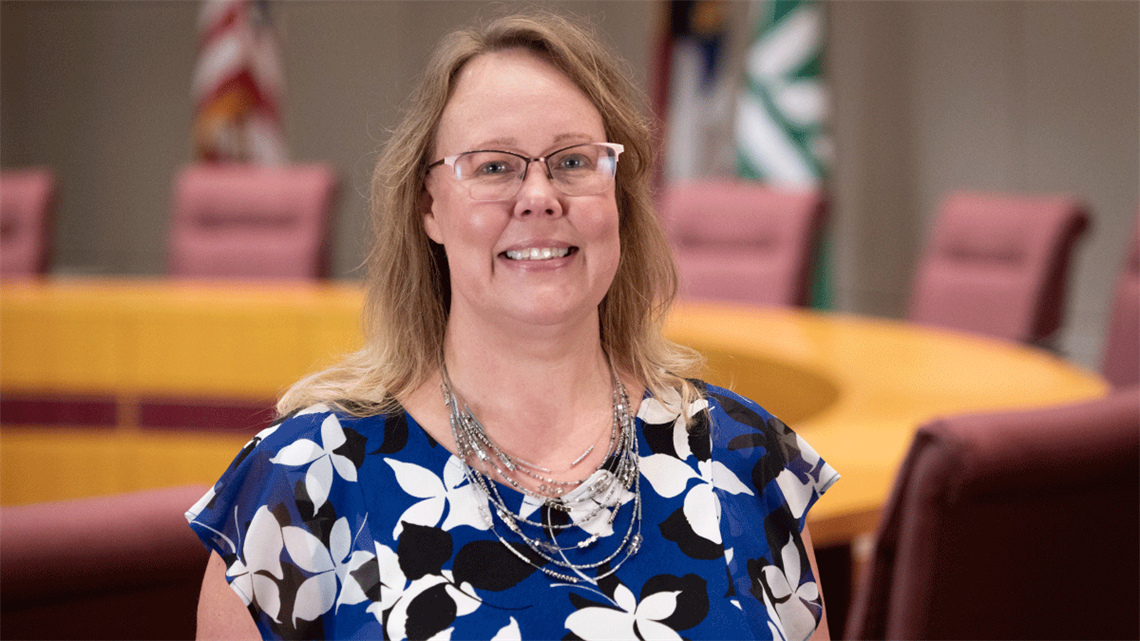Fast Five with Debbie Smith
Published on October 25, 2023

Debbie Smith is the director of the Charlotte Department of Transportation (CDOT) and has been with the city for more than 24 years. As a part of National Pedestrian Safety Month, we interviewed Smith to learn more about her role and CDOT’s connection to pedestrian safety.
Which part of the organization do you lead?
I serve as the CDOT director. Our department includes more than 400 employees that connect Charlotte in delivering our mission to enhance the driving, bicycling and walking experience by planning, designing, operating and maintaining our city's transportation infrastructure.
Why did you decide to work for the City of Charlotte?
My family moved to the Charlotte area in 1989. I was just starting high school when Hurricane Hugo devastated the city. I remember seeing the men and women of the City of Charlotte working tirelessly to restore services and that had a lasting impact on me. I also had several math and science teachers at East Mecklenburg High School that encouraged me to pursue engineering in college. I attended the University of North Carolina at Charlotte and was one of just a handful of female graduates in the Civil Engineering program. After a few years working for the North Carolina Department of Transportation, I pursued my dream job as a traffic engineer in 1999 with the City of Charlotte. And, I guess you can say the rest is history.
What is the biggest organizational priority you’re working on right now?
This is a unique time for our citywide organization as we work together to implement Council’s priorities for transformative investments in mobility, housing affordability, workforce development, sustainability and economic growth. As part of these efforts CDOT is leading and coordinating across boundaries, departments, agencies, and partners both public, private and regional to set an ambitious mobility investment plan – The Charlotte “Mobility Blueprint.” This blueprint will guide the city’s multimodal investment for the next 20 years and is certainly one my department’s biggest (and exciting) priorities!
What is your favorite part about working for the City of Charlotte?
I get to work on some of the city’s most important challenges with so many remarkable people both in my department and across the city organization. I also appreciate gifted storytellers and we have some uniquely talented individuals in my department.
What is your favorite restaurant in Charlotte?
Lang Van. I adore the atmosphere that Dan Nguyen, owner, has created at this truly special restaurant with authentic Vietnamese food.
Bonus Question: It’s Pedestrian Safety Month. What are some initiatives in CDOT that support pedestrian safety?
Think about this – every trip begins and ends as a pedestrian, so we are all invested in pedestrian safety. Our Vision Zero strategy to eliminate traffic-related deaths and severe injuries, is foundational in the Charlotte Strategic Mobility Plan. There are several pedestrian safety specific endeavors underway including neighborhood traffic calming (reduction of speed limits or the addition of speed humps), marked crosswalks, ADA ramps, removing trip hazards on sidewalks, signalized crossings, accessible pedestrian signal push buttons, leading pedestrian intervals and flashing beacons. Earlier this year, Charlotte was awarded a $4.4 million United States Department of Transportation Safe Streets for All grant. This grant will allow us opportunities to leverage the $12.6 million in Vision Zero funds approved by voters in 2022 to install pedestrian improvements at about 30 locations across the city.
I also don’t want to miss an opportunity to highlight our local World Day of Remembrance event on Nov. 19, at CMPD Freedom Division at 4150 Wilkinson Blvd. The city will join other communities commemorating people killed and seriously injured on streets. It is also a way to elevate the crucial work of emergency services, advocate for better support for road traffic victims and victim families and promote evidence-based actions to prevent and eliminate traffic injuries and deaths.